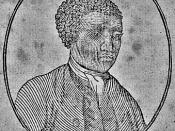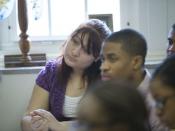In the early years of the American colonies, it was an accepted practice to trade seven years of indentured servitude as payment for passage to the New World. In 1683, Molly Welsh (or Walsh) made her way from England to Maryland this way, and seven years later she was farming tobacco on her own land in Baltimore County. In 1692, she purchased two slaves directly from a slave ship, one of them named Banne Ka, the son of an African chief. After granting her slaves their freedom, she married Bannaka and together they had four daughters.
Molly and Bannaka's eldest daughter, Mary, married Robert (also a freed slave), and together they took Mary's surname (now Bannaky). In 1731, their son Benjamin Bannaky was born - free. Benjamin's father took great care to provide for his child by purchasing land in Benjamin's name when he was only about 5 years old.
Young Benjamin grew up on the tobacco farm, and was taught to read by his grandmother Molly. Later, when a local school was formed, the schoolteacher changed the spelling of his last name to Banneker.
Banneker proved to be a genius: at the age of 21, he was shown a pocket watch - perhaps for the first time - and because of his fascination with it, the owner, Josef Levi, allowed him to disassemble it for study. After documenting all of the individual parts and reassembling the watch, Benjamin proceeded to carve an enlarged version entirely out of wood, creating the first striking clock made entirely in America.
For the next 35 years, Banneker performed watch and clock repairs and successfully farmed tobacco with sophisticated irrigation techniques. In 1787, he began to study astronomy with the support and encouragement of his new neighbors, George and Joseph Ellicott. The following year,



Plagiarized
This essay was plagiarized from http://www.sdspls.org/nshof/banneker.html
2 out of 2 people found this comment useful.